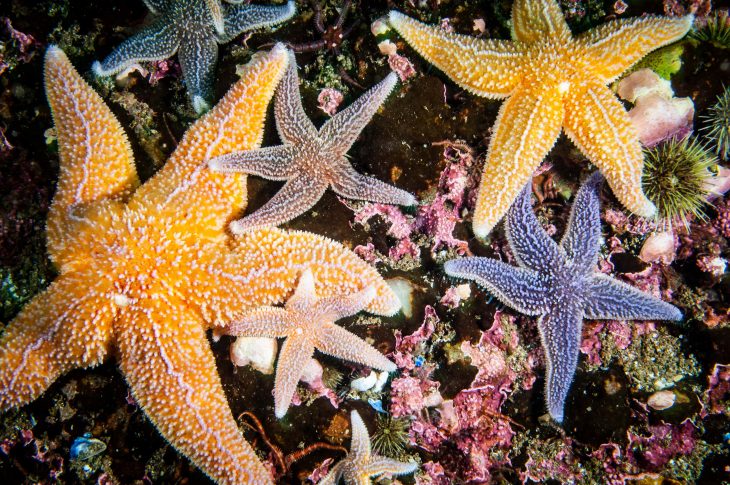
The starfish is one of the most recognizable forms of aquatic life in the world. In fact, they are the most common marine creatures to be encountered, and there are so many different kinds of them. In this article, we’ve gathered 50 different types of starfish from around the globe, not only for your reading pleasure, but so you could also learn how to interact with them better!
- Over 1,900 species of starfish live around the world today.
- Starfish can live in waters as deep as 6 km below the surface.
- On average, a starfish has only five arms.
- Some starfish can have between 10 and 15 arms.
- The oldest known starfish to live in the wild reached an age of 34 years.
- The starfish’s ancestors first evolved during the Cambrian Period, around 539 million years ago.
- The first recognizable starfish evolved during the Ordovician Period, around 450 million years ago.
- The starfish nearly went extinct during the Great Dying at the end of the Permian Period around 252 million years ago.
- The starfish species boomed in diversity starting from the Triassic Period onward.
- The French zoologist Henri de Blainville gave them their modern name in 1830.
- American ecologist Robert Paine described the starfish as a keystone species in 1966.
- Scientists from New Zealand agreed with his conclusion in 1971.
- In 2009, scientists discovered some starfish adapting surprisingly easily to rising ocean temperatures and acidity.
- A genetic study in 2012 discovered that starfish evolution continues to this day.
- Scientists in 2014 isolated a virus causing widespread wasting sickness among various starfish species.
- The starfish live in various ocean habitats, from warm tropical waters to icy polar waters.
- The starfish can regrow any lost limb.
- Scientists have studied the starfish’s regenerative ability as part of research into stem cells.
- Starfish quickly expel foreign objects from their bodies, making it hard for scientists to track them with implanted radios like with other animals.
- Starfish fossils make up some of the world’s rarest, thanks to their fragile bodies.
Was this page helpful?
Our commitment to delivering trustworthy and engaging content is at the heart of what we do. Each fact on our site is contributed by real users like you, bringing a wealth of diverse insights and information. To ensure the highest standards of accuracy and reliability, our dedicated editors meticulously review each submission. This process guarantees that the facts we share are not only fascinating but also credible. Trust in our commitment to quality and authenticity as you explore and learn with us.
